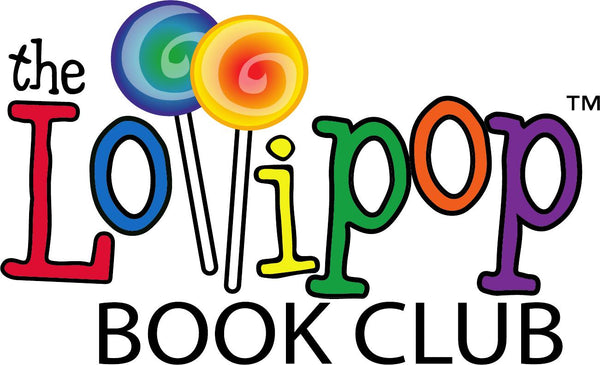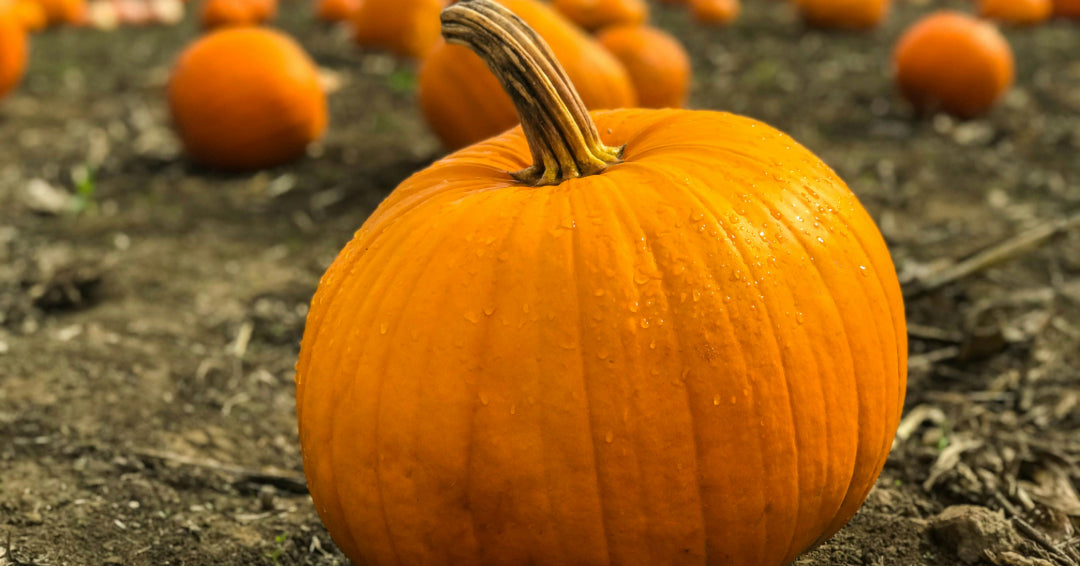The fall season is filled with an abundance of seasonal festivities, like fun hayrides, Halloween parties, and, of course, mandatory visits to the pumpkin patch. Families enjoy exploring fields in search of perfectly round, bright orange pumpkins to decorate when they return home. They grow abundantly across farms during the fall months, eliciting a variety of warm feelings and loving sentiments for the upcoming holidays. It is a time of year when families gather together for meals and celebrations. Next time everyone is around the table, have some fun sharing the most interesting facts about pumpkins.

Everything to Know About Pumpkins
Children love learning about pumpkins for lots of reasons, often tied to the fun experiences they already associate with them. Pumpkins are a huge part of Halloween and Thanksgiving. Think about carving spooky jack-o'-lanterns, decorating for fall, or enjoying delicious pumpkin pie! These holidays are packed with exciting traditions, tasty treats, and playful activities. When kids learn facts about pumpkins, it makes these cherished celebrations even more engaging and understandable. Kids can find inspiration for all their fall decorating projects by reading children's books about pumpkins that are filled with original, creative artwork. The illustrations in these stories show pumpkins springing to life and enjoying all the seasonal festivities. There are pictures of jack-o-lanterns with jagged teeth and harrowing eyes perched on porches, ready to scare anyone who dares to pass by. Kids will even love making their own spooky creation, scooping out seeds and baking them for a tasty snack along the way. Meanwhile, here are some intriguing facts about pumpkins to share with your little ones while putting your creative juices to work.
Pumpkin Production in the United States
The U.S. is a major player in pumpkin production, with commercial farms in every state. However, the bulk of these gourds come from just a handful of states: Illinois, California, Indiana, Michigan, Pennsylvania, and Washington. As you might expect, the pumpkin market is highly seasonal, with demand skyrocketing in the fall, especially around Halloween.

(1) The United States produces 2 billion pounds every single year.
Approximately 1.5 billion pounds of viable pumpkins are produced from a crop that totals about 2 billion pounds. To amass this enormous volume, close to 65,000 farm acreage is dedicated to this crop, of which over 75% is available in the month of October.
(2) Illinois produces more pumpkins than any other state.
Illinois holds its lead because it specializes in pumpkins for processing, mainly for pie filling and other canned goods. Its climate and soil are perfect for these varieties, and it's even home to major pumpkin processing plants. While other states focus on pumpkins for fresh sales or Halloween decorations, Illinois's commitment to processing makes it the undisputed champion in total pumpkin output. It often grows more pumpkins than the next five top-producing states combined!
(3) About 60,000 to 70,000 acres are dedicated to pumpkins across the country.
Pinpointing the precise total pumpkin farm acreage in the U.S. can be challenging. Data from the USDA often fluctuates annually, and comprehensive reports aren't always available for every single state. However, based on the most recent information, we can provide a reliable estimate. With 17,600 acres dedicated to harvesting pumpkins, Illinois has more than twice the acreage for growing pumpkins than any other state in the country. The next five states- California, Indiana, Michigan, Pennsylvania, and Virginia- all dedicate between 4,200 and 6,300 acres just to pumpkins.

Nutritional Value of Pumpkins
Pumpkins are incredibly nutritious, offering a wide array of health benefits. They're fantastic for your eye health, bolster your immune system, promote healthy skin, and even support cell growth and division. What's more, pumpkin flesh is low in calories and high in water, making it an excellent choice if you're looking to manage your weight.

(4) Pumpkins are actually a fruit.
Botanists classify pumpkins as a fruit because they are borne from the seed-bearing flower of a plant. Vegetables are the actual parts of the plant that are edible, like leaves, stems, roots, and bulbs. People tend to associate pumpkins with vegetables because the flavory leans toward savory rather than sweet. In fact, they are in the same family as cucumbers and melons.
(5) Pumpkins are packed full of vitamins and minerals.
They are full of heart-healthy magnesium, contain more potassium than bananas and more fiber than kale. This fruit, while not consumed at the same rate as other tastier options, is just as rich in antioxidants, vitamins, and minerals. Vitamin A, Vitamin C, calcium, and fiber are few examples contained in this nutrient-dense, heart healthy food that boosts the immune system and aids in weight loss.
(6) You can eat almost every single part of a pumpkin.
You may know that seeds and pulp can be eaten, but so are the stem, skin, leaves, flowers, and even the roots. The stalk is the only part that cannot be easily consumed by humans. They are part of the squash family which boasts a long list of edible components. Some varieties are tastier than others, like sugar pie pumpkins with especially sweet flesh perfect for pies.
(7) The most notable pumpkin nutrient is Vitamin A.
That vibrant orange in pumpkins? It's all thanks to beta-carotene, a potent antioxidant your body handily converts into Vitamin A. Just one cup of cooked pumpkin delivers well over 200% of your daily recommended Vitamin A, making it an excellent way to supercharge your intake. This essential nutrient is a powerhouse for eye health, helping to preserve your vision and protect the retina. Plus, it gives your immune system a significant boost, strengthening your body's ability to fend off infections.
Many Pumpkin Varieties and Colors
The incredible variety of pumpkin colors we see today stems primarily from their genetic makeup, shaped by both natural evolution and thousands of years of human selective breeding. This extensive genetic diversity has led to countless pumpkin varieties cultivated worldwide, each boasting unique characteristics perfectly suited for different uses.

(8) Pumpkins come in at least 9 different colors.
Obviously orange is the most common pumpkin color by far. And most have probably spotted white pumpkins sold at farmer's markets and local stores during the fall season. But kids will be surprised to know that this fruit also appears in shades of green, blue, pink, tan, grey, yellow, and red. There are even striped varieties that add a fun flair to seasonal displays.
(9) More than 200 varieties are available in the United States.
This booming industry continues to expand with the cultivation of new varieties on a regular basis. One of the most common includes the Howden, an oval shaped version perfect for carving. The Jack-Be-Little is a tiny, 3-inch cutie that is great for indoor seasonal decor. The Hubbard is a unique, blue pumpkin that adds a nice contrast to displays. The Jarrahdale is more flat with a greyish exterior hue and bright orange flesh.
(10) Human selective breeding is why there are so many pumpkin varieties.
For thousands of years, farmers and gardeners have intentionally selected pumpkins with specific, desired traits, then saved their seeds. This process, called selective breeding, has rapidly diversified pumpkins. Different regions and cultures had unique needs and preferences, leading to the development of varieties optimized for everything from baking and carving to decorating, competitions, and even disease resistance.

Strange Pumpkin World Records and Contests
The widespread appeal of giant pumpkin contests and the continuous chase for new records comes down to a captivating mix of human ambition, farming ingenuity, and community pride. It's a classic human challenge: who can cultivate the biggest, most impressive, and truly extraordinary pumpkin? There's immense satisfaction and a deep sense of accomplishment for growers who spend months meticulously planning, nurturing, and strategizing to outdo their competitors.

(11) The world-record holding pumpkin weighed 2,749 pounds.
Prior to this whopper, the heaviest pumpkin ever recorded was a 2,702 pounder from Italy in 2021, beating a one previously grown in Germany weighing in at 2,600 pounds. Then, on October 9, 2023, Travis Gienger destroyed the record with his gigantic entry in the 50th World Championship Pumpkin Weigh-Off in California. Named Michael Jordan, this gigantic gourd was a lifetime in the making. Gienger grew up fascinated by contests held at local fairs. By the time he was fourteen, he produced a 470-pounder and went on to win the North American record in 2020 with one weighing 2,350. When he beat his own record in 2023, Gienger was rewarded with a lucrative prize for his efforts- a $30,000 paycheck.
(12) The Safeway World Championship Pumpkin Weigh-Off is the most famous contest.
The Safeway World Championship Pumpkin Weigh-Off in Half Moon Bay, California, is often called the "Super Bowl" of giant pumpkin contests. It has consistently been the place where world records for the heaviest pumpkin are broken, drawing international attention. The contest also offers significant financial rewards. The top grower typically receives a "pay-by-the-pound" prize, usually around $9 per pound. Plus, there's an impressive $30,000 mega-prize for anyone who breaks the world record and holds it at the end of the Half Moon Bay Weigh-Off. This substantial prize money naturally attracts the most dedicated and skilled giant pumpkin growers from around the globe.

Nationwide Pumpkin Sales Data
In the U.S., national pumpkin sales data largely focuses on production volume, market value, and per capita availability. It's important to distinguish between pumpkins sold fresh for carving and decoration versus those grown for processing into products like pumpkin puree. Beyond just fresh pumpkins, there's a substantial market for processed pumpkin products. Additionally, the pervasive "pumpkin spice" trend has generated an enormous market that extends far beyond actual pumpkin sales, influencing everything from beverages to baked goods.

(13) Pumpkin flavored products generate $800 million in annual sales.
There is no other flavor that has created entire industry with an endless array of products bearing its aroma. Starbucks spearheaded the trend in 2003 with the introduction of its enormously popular pumpkin-spiced latte. Other companies jumped on the bandwagon, rolling out products during the fall months carrying this pleasing scent and taste. Some of the many examples include candles, lip balms, dog treats, Oreos, dog treats, cereal, tea, marshmallows, cheese, hot cocoa, ice cream, and just about anything else edible or aromatic.
(14) Americans spend hundreds of millions annually on pumpkins to carve into jack-o-lanterns.
Come Halloween, Americans really dig into their wallets for jack-o'-lanterns, spending hundreds of millions of dollars on carving pumpkins. While 2024 projections hinted at around $762.8 million in sales for these festive gourds, the actual spend in 2023 was even higher, hitting an impressive $843.6 million.




